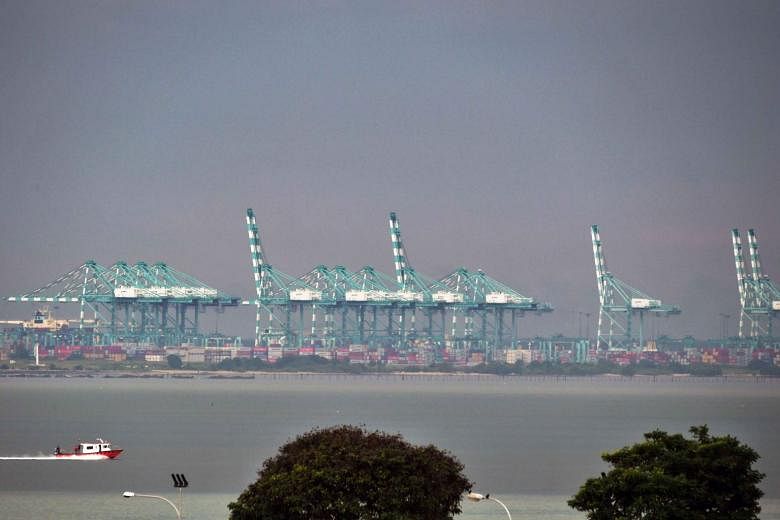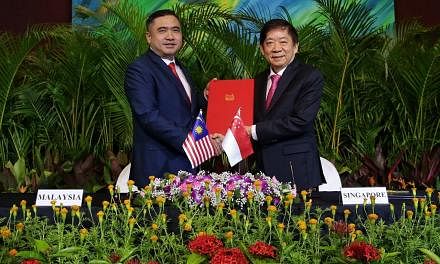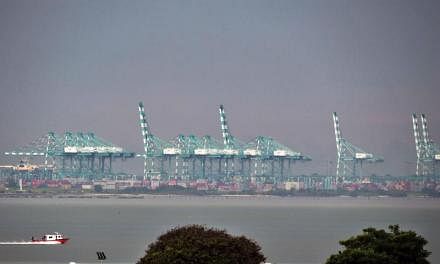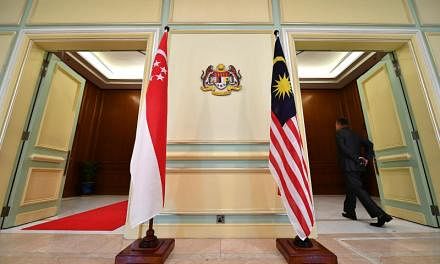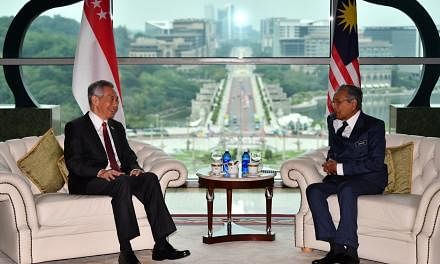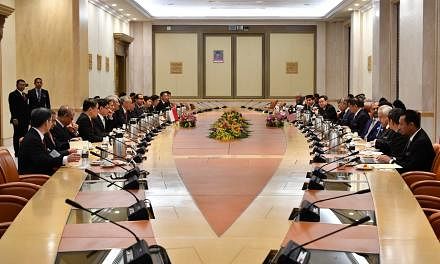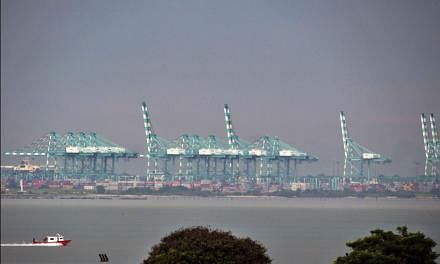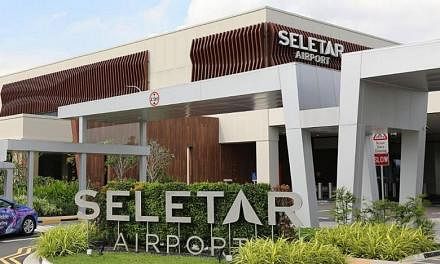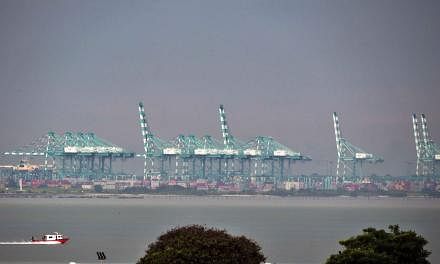SINGAPORE - Malaysia and Singapore mutually suspended the implementation of their overlapping port limits on Monday (April 8), going back to the port limits in place prior to Oct 25, 2018 and Dec 6, 2018 respectively.
The move came into effect at 12.01am, a spokesman for the Maritime and Port Authority of Singapore (MPA) said on Monday.
"This suspension is pursuant to one of the five recommendations in the report of the Working Group on maritime issues surrounding the overlapping Johor Baru port limits off Tanjung Piai and Singapore port limits off Tuas," the MPA said.
"This was agreed upon by the Foreign Ministers of Singapore and Malaysia on March 14, to de-escalate the situation on the ground and pave the way for maritime boundary delimitation."
Singapore and Malaysia also agreed not to authorise and to suspend all commercial activities in the area, as well as not to anchor any government vessels there.
The two countries have been embroiled in a dispute over Singapore's territorial waters off Tuas after Malaysia unilaterally extended the Johor Baru port limits last October.
Singapore responded by extending its port limits within its territorial waters.
In March, both sides agreed to de-escalate tensions by jointly suspending their overlapping port claims and reverting to their ports' former limits.
The update on Monday comes ahead of an upcoming leaders' retreat between the two countries.
The meeting between Prime Minister Lee Hsien Loong and his Malaysian counterpart Mahathir Mohamad, postponed since November last year, will take place in Malaysia's administrative capital Putrajaya on Monday and Tuesday.
Asked what issues would be discussed at the retreat, Tun Mahathir said at a news conference in Malaysia last Friday: "All the things that are... unresolved, including the water problem... the border line with our waters... flights over our area, who is going to control it."
Singapore and Malaysia are also in talks over air space.
Last Saturday, both countries said they had reached an agreement on flying procedures at Seletar Airport, paving the way for Malaysian carrier Firefly to resume its services to Singapore, more than four months after a suspension.
Transport Minister Khaw Boon Wan and his Malaysian counterpart Anthony Loke said that "in the spirit of bilateral cooperation", Singapore will withdraw the Instrument Landing System (ILS) procedures for Seletar Airport, and Malaysia will indefinitely suspend its permanent restricted area over Pasir Gudang, Johor.
With the agreement implemented by the civil aviation authorities of both countries last Friday, the two ministers said they looked forward to Firefly commencing flights to Seletar Airport this month.
The ministers noted that a high-level committee has been set up to review the Operational Letter of Agreement between Kuala Lumpur and Singapore Area Control Centres Concerning Singapore Arrivals, Departures and Overflights 1974.
Under the agreement, Singapore air-traffic controllers manage airspace over southern Johor. But Malaysia has said it wants to reclaim the rights.
The disagreement over Seletar surfaced last November after Malaysia's civil aviation regulator blocked Firefly's planned move from Changi Airport to Seletar, objecting to the introduction of an ILS at Seletar Airport that it claimed would restrict developments at nearby Pasir Gudang town.
The system, installed at many other airports, uses ground instruments to help air-traffic controllers guide pilots coming in for landing.
Without it, pilots rely on their vision, which means they cannot land in bad weather or when it is dark.
Countering Malaysia's objections, Singapore said repeatedly that the use of ILS at Seletar Airport does not change existing operations, including height limits.
Following the disagreement, Malaysia declared a restricted zone over Pasir Gudang for the purpose of military activities.
This affected the flight path for aircraft heading to and from Seletar, adding time and complexity.
On Jan 8, both countries agreed to simultaneously suspend the ILS and the restricted area at Pasir Gudang for a month. This was later extended until the end of last month.
